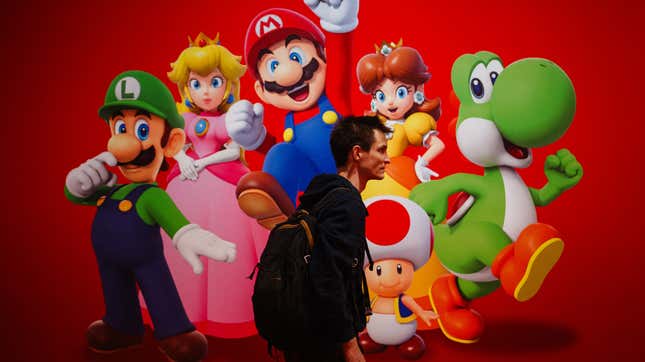Trump to impose tariffs on imported goods, like gaming consoles.
The gaming industry faces significant challenges as President-elect Donald Trump prepares to impose new tariffs on imported goods, including gaming consoles. These tariffs could dramatically increase prices on popular consoles like the PS5 Pro, the upcoming Switch 2, and PC gaming components, leaving consumers to bear the brunt of higher costs. The proposed tariffs, aimed at boosting U.S. manufacturing, could end up costing gamers billions while stifling innovation and altering the landscape of the gaming industry.
The History of Tariffs in Gaming
In 2019, the Trump administration proposed a 25% tariff on various consumer electronics, including gaming consoles, prompting Microsoft, Sony, and Nintendo to issue a joint letter warning of steep price increases. They argued that such tariffs would add $840 million to consumer costs during the holiday season alone, potentially putting consoles out of reach for many families. The lobbying efforts were successful, and the tariffs were postponed, allowing consoles like the PS5 and Xbox Series X to launch without added costs.
However, with Trump’s re-election and renewed emphasis on imposing tariffs, the gaming industry now faces a much graver threat. His administration has proposed a 60% import tax on goods from China and a 10-20% tax on imports from other countries, including Mexico and Canada. These tariffs would target gaming consoles, which are predominantly manufactured overseas, as well as a wide range of related products.
Potential Price Hikes for Gamers
Tariffs are essentially taxes on imports, and companies typically pass these costs on to consumers. For gaming consoles, the impact could be severe. The Consumer Technology Association (CTA) has estimated that gaming consoles could see a 40% price increase due to tariffs. This would mean:
- A Nintendo Switch could rise from $300 to over $400.
- A PS5 Pro might jump from $700 to nearly $1,000.
- Nvidia graphics cards and PC gaming handhelds like the Steam Deck could see similar spikes.
The upcoming Switch 2, expected to release in 2025, could be priced almost double its predecessor, severely impacting year-one sales. Accessories, charging cables, and even digital downloads might also see price hikes, further straining consumer budgets.
Economic Impact on Gamers and Industry
Higher prices could significantly reduce demand for gaming consoles and related products. The CTA report predicts a 57% drop in console sales if tariffs are implemented. This reduction in spending could have ripple effects across the gaming ecosystem, affecting game publishers, studios, and retailers.
The video game industry, already grappling with the economic downturn following the pandemic-era boom, could face additional challenges. Interest rate hikes and cost-cutting measures have already led to layoffs and studio closures. The added financial burden of tariffs could push more companies to the brink, limiting job opportunities and stifling innovation.
If tariffs drive up the cost of physical consoles and games, the industry may accelerate its shift toward digital gaming and cloud-based platforms. Digital-only consoles, exempt from tariffs, could gain popularity. Players might also turn to subscription-based services like Xbox Game Pass or PlayStation Plus, which offer access to extensive libraries of games without the need for physical purchases.
However, this transition could come with its own set of challenges. Companies may raise the prices of digital games and subscriptions to compensate for lost revenue, further burdening consumers. Smaller studios relying on physical sales could struggle to adapt, potentially leading to a homogenization of gaming content.
Despite the dire predictions, there remains some uncertainty about how the tariffs will unfold. In 2019, Trump backed off similar proposals after intense lobbying from tech giants and manufacturers. Industry leaders, including Microsoft CEO Satya Nadella, are likely to engage in similar efforts to secure exemptions. There is also the possibility of a compromise, where tariffs are implemented at lower rates or phased in gradually.
However, if Trump makes good on his campaign promises, gamers and the gaming industry may face a difficult future. Higher prices could discourage console purchases, reduce spending on new games, and stifle innovation as companies divert resources toward tariff payments instead of product development.
The proposed tariffs could reshape the gaming industry in profound ways. Gamers would likely face higher costs for consoles and accessories, while developers and publishers could see reduced revenues. The industry’s pivot toward digital and cloud-based platforms might accelerate, but this shift could marginalize smaller developers and limit consumer choice.
Ultimately, the full impact of Trump’s tariffs depends on the policies enacted in the coming months. If the gaming industry successfully negotiates exemptions, it could avoid the worst-case scenario. However, if tariffs proceed as planned, gamers and the broader industry will bear the financial burden, potentially changing the gaming landscape for years to come.


Comments are closed.